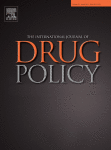Citation
Fjær, Eivind Grip; Pedersen, Willy; von Soest, Tilmann & Gray, Paul (2016). When is it OK to be drunk? Situational and cultural variations in the acceptability of visible intoxication in the UK and Norway. The International Journal on Drug Policy, Mar 2016, Vol.29, p.27
ISSN: 09553959
DOI: 10.1016/j.drugpo.2015.12.002
Abstract
Research on norms regulating drunken behaviour has tended to focus on differences between different countries and cultures rather than variations within them. Here, we examine whether there are:
(i) situation-specific differences in the acceptability of visible intoxication among students in the UK and Norway;
(ii) whether there are situation-specific and overall differences in this regard between the two countries; and finally
(iii) to what degree possible differences reflect individual characteristics such as use of alcohol, perceived harm of alcohol consumption, and broader value orientation.
Students at one British (n = 473) and one Norwegian (n = 472) university responded to a survey including a battery of questions assessing the acceptability of visible intoxication in different situations, such as with friends, with work colleagues, with family members, and situations where children are present. Data were also collected regarding alcohol consumption, perceived harms of alcohol consumption, and value orientation.
Analyses of covariance were performed to assess patterns in the acceptability of visible intoxication across different situations, and the relative contributions of country, alcohol consumption, perceived harm of alcohol consumption and human values. In both countries, visible intoxication was rated as most acceptable in situations involving friends and colleagues. Students from both countries rated visible intoxication least acceptable in situations where children are present.
However, both overall, and in situations where children or family members are present, acceptability of visible intoxication scores were higher in the UK than Norway. These differences persisted after control for other variables. The study demonstrates large situational variation in acceptability of drunken behaviour, pointing to a fine-meshed set of norms regulating alcohol use and drunken behaviour within the two cultures, with the UK standing out as a more alcohol-liberal culture than Norway. Such differences underline how norms regulating drunken behaviour are culturally constituted.
Continue reading this article (use permanent link)
May require logging on to the UiO network.
